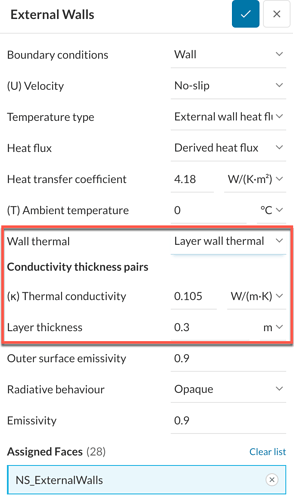When analyzing thermal comfort inside a room or a building structure, it can become important to incorporate insulation effects on the building fabric in order to allow for a more accurate representation of a certain design.
You can achieve that using an “External Wall Heat Flux” boundary condition in CHTv2. Inside that boundary condition, you receive the option to define an additional thermal resistance via means of a “Wall thermal” which allows the user to add information on the thermal conductivity and thickness of the wall.
For example, let’s assume that you would like to define an insulation layer to the external walls of your building/room, then the process would be as follows:
- The external wall is made of multiple layers that all contribute to the total thermal resistance of the wall. We can start by adding the thermal resistances of those layers (R-values):
R_{Wall }= R_{InternalAirFilm}+ R_{ExternalAirFilm} + R_{Brick}+ R_{Plaster} + R_{Insulation} - Back calculate the thermal conductivity from the R_value:
K = WallThickness/ R_{Wall}
For more information on the analysis of building fabric, kindly refer to the following webinar.
